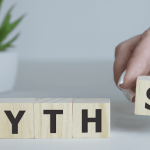There are many marketers out there who wonder about consumers’ perceptions regarding prices and how they can be convinced about purchasing a product? What is going on in a consumers’ head when you tell them the price of your product? Are they trying to logically and sensibly compare market prices, costs, norms of the industry, etc.?
The two-faceted notion about price!
If we talk about consumers’ notions about the price of a product, this double-faced notion will clear up your head.
When the consumer hears the price of your product, they consider the sacrifice they’ll have to make in order to get the product. (which is a negative thought)
On the other side, they consider price as a cue to get high-quality products and services. (which is the positive side)
Now, it depends upon the situation in hand, if the consumer is thinking about the positive notion, most probably they’ll pay the price.
So, it is your fundamental responsibility to offer a product or service at a price that would create a balance of sacrifice and the cue of high-quality.
WHAT AFFECTS PRICE PERCEPTION?
Do you ever wonder, how do your customers decide whether a product is high-priced or low-priced?
It’s quite simple. During the life-span of consumers, they have come across various products at different prices. When they come across your product, they’ll compare prices they have come across earlier and get to the conclusion accordingly.
This problem can be solved by a trick called Price Anchoring, where you aim at increasing the consumers’ internal reference price by exposing them to an even higher price.
Almost all Ecommerce sites take advantage of price anchoring, and it is quite easy to implement too.
BONUS TIP:
In order to test whether the price anchoring is actually working or not, adapt the price anchoring not only on your product pages but on the search engine too.
WARNING:
You may damage your reputation if you artificially increase the prices as the people who use comparison search engines would perceive your site as a heavy-priced website.
pricechecker for e-retailers
According to research, if you want consumers to purchase your products, you should make sure the highest and lowest price is attractive as the consumer would be influenced by the prices of all your products and not just the anchored price of a particular product (that they have to buy).
The products should be displayed in such a manner that if your customer is searching for premium products, cheap products should not come across him/her.
Researchers have also proved that your products should be presented before the customer in descending order rather than ascending order if you want the customer to choose high-priced products.
This lets the customer be influenced by whichever positive and negative notion is heavy-weighted in your customer’s mind.
It is even better to be successful in price anchoring to set a price for a particular product you want to sell lower than that of your competitors. Market’s best price comparison software pricechecker helps the retailers in deciding which products to be placed. It is always useful for businesses to compare prices and position their products in such a way that it would influence the perception of the customer. Without a price monitoring software in place there is a good chance that some are priced low whereas there is competitive edge to price it higher.
BONUS TIP:
Keep the default presentation at descending order, but the other options should also be available so that you don’t force your assortment order at the customer.
ARE THERE ANY LIMITATIONS OF THE MARKETERS’ INFLUENCE?
Yes, every coin has two sides. Marketers’ influence is very useful to read the consumer’s mind, but before applying it to your business, you should keep in mind what it has to offer on the other side.
When the researchers dig further on the marketer’s influence, it was noticed that the marketer’s influence depends upon the number of prices that the consumer’s encounter on a daily basis and their life-span.
So, we can say that if your customer has previously come across a lot of prices and products, it would be difficult for you to influence them even at a bit lower price.
In these times, where the online sites are over-flowed with products, and there is stiff price competition among the suppliers, consumers come across a lot of products at different prices. You will have to lower the price significantly in order to influence your customers.
On the other hand, the customers who are actually influenced by you lowering your price like those who are very price-sensitive would not pledge their loyalty to you.
The customers whose purchasing decision is prominently based on best prices would still be looking for more discount after they have encountered below-average prices.
BONUS TIP:
If you claim to your customers that you are offering the best prices, it is very important for you to look for the changes of prices on other sites closely; otherwise, your customer would not be loyal to your store and your brand image may be destroyed.
HOW CAN I BUILD A PERCEPTION IN CONSUMERS’ MIND THAT LASTS?
There are many people out there who believe that Amazon is the best site to get low prices. Maybe this is the reason Amazon has captured 50% of the US market share of Ecommerce products.
Amazon may not provide the lowest prices for all the products. It is just a perception that has been entered into the mind of customers.
It’s their dynamic strategies of pricing that has influenced people. Amazon has a pricing engine in-house that changes the prices as per the competitor’s price, demand, stock, etc. This price monitoring software has helped many retailers to increase their market share and build a better brand perception. Irrespective of the size of the online store, the full market potential can be achieved by comparing prices and setting it right for the customers. There are two possible outcomes for comparing prices. One, the brand can capture the market by setting low prices as compared to their competitors. Two, the business can increase their profit margin. In either case, competitor monitoring is useful for the business.
DO NOT ALIENATE YOUR CUSTOMERS
In these times, dynamic pricing is working great for online retailers. Although, there are many suggestions on the topic that it is ethically not correct to charge different prices from various customers for the same product.
So, a simple solution to it can be to offer different discounts and charges to different customers while letting them know that they are paying distinct prices for the same prices.
In short, your dynamic pricing strategy and price discrimination would well well until revealed. So, you can email them discounts or send them through a personal medium.
FINAL WORDS
If you want your customer to make a decision to purchase your product, you will have to emphasize the positive aspect of the price more than the negative aspect.
However, this won’t work long-term for you. To be able to flourish in the long term, you’ll have to change the perception of consumers that your online stores offer unbeatable prices.
FREQUENTLY ASKED QUESTIONS
Q1. What do you mean by Consumer Price Perception?
Ans. Consumer Price Perception is basically what the consumer thinks of your prices as compared to your competitors and other retailers.
Q2. How can I influence consumers’ perception of my prices?
Ans. The consumers see the price of your product in two notions, and one is positive that the price is paid as a cue to get high-quality, and the other is negative that they will have to sacrifice money.
All you have to do is price your products in such a way that they stress on the positive side.
Q3. I have often heard the term ‘Perceived benefits,’ what does that mean?
Ans. Perceived Benefits are basically the positive feelings that the consumers’ will feel when they use your product or services.





